
Advertisement

 |
Advertisement
|
 |
After the ascend and all other previous adventures, the staunch members of our group started to grumble – the people thought to be going to Peru to rest but not get ready to become guerillas. The time for the deserved rest from this rest has come and we took the plane from Cusco to Tumbes that is located close to the border with Ecuador, from where we moved to the coast, where a warm ocean and the most bourgeois in the beech Peru hotel Punta Sal was waiting for us: 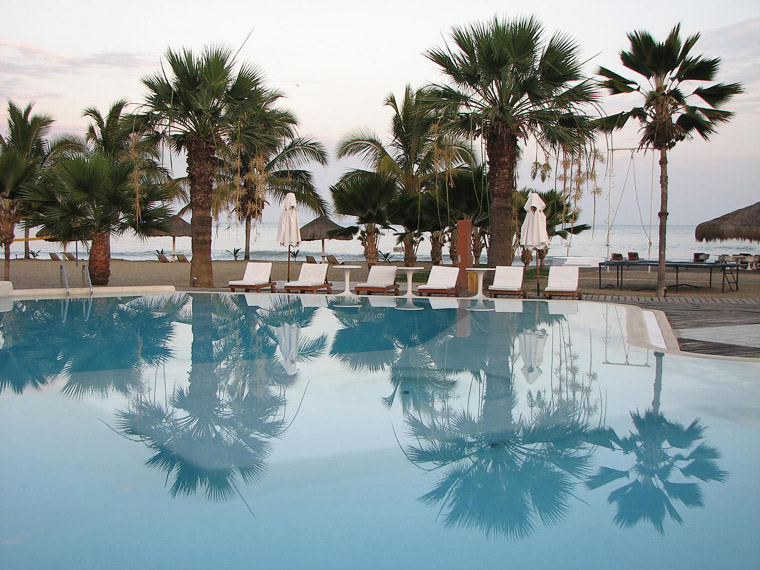
Over there, quite resort coconuts grew on the resort palm-trees against the quite idyllic background of sand and really pacific ocean: 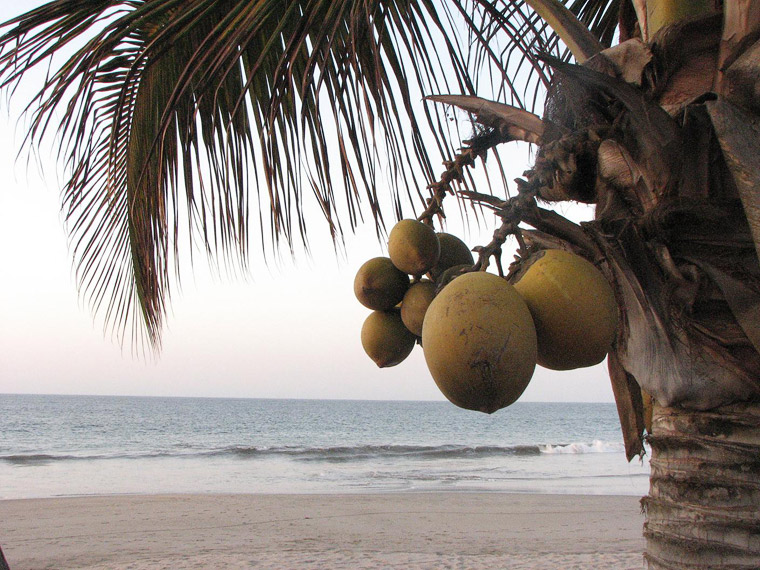
And what sunsets... 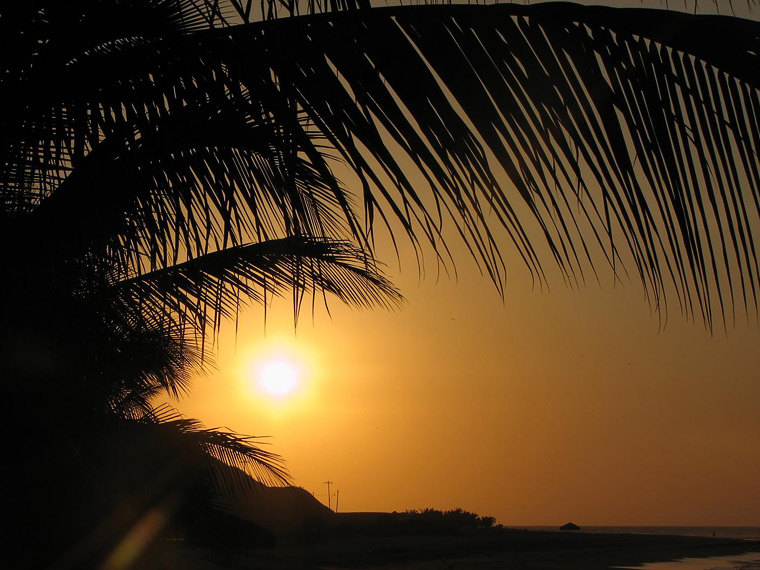
When night fell, unsuspecting miniature grasshoppers descended on our shoulders: 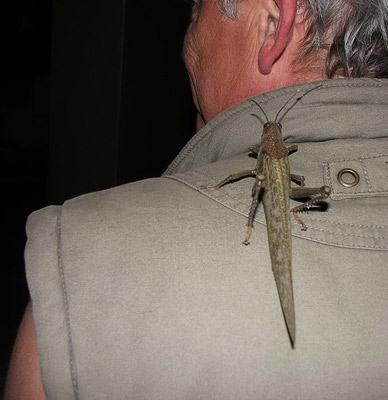
It was getting more and more evident, that it was time to do away with that routine as soon as possible, and in the sunset hours of the following day I started to the neighbouring fishermen village Mancora to establish useful acquaintances and not let oneself and others perish in the next days between the beaches, swimming pools and other useless ways of passing the time. The event completed in pleasant fellowshipping, my drinking companion – Pedro - turned out to be the main fishermen of the area, and at six in the following morning we watched that dawn at this berth: 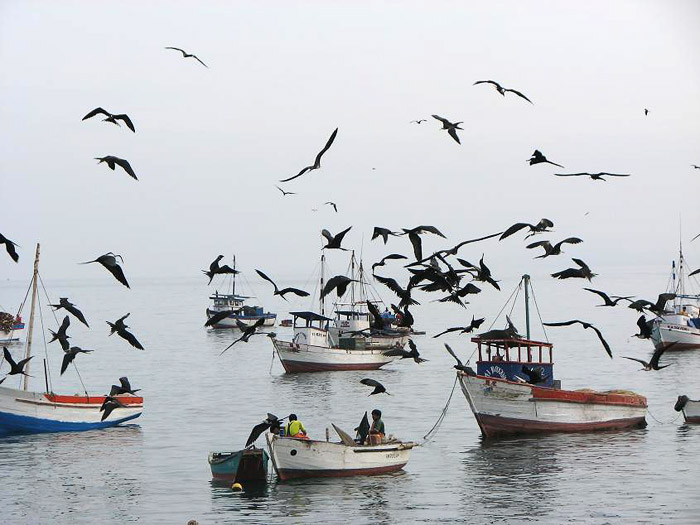
Then we cast our spinning rods and here is what came out of it: 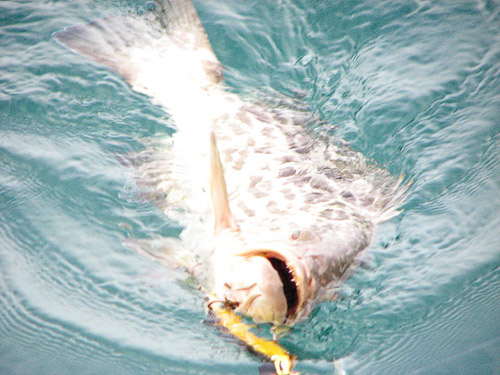
The fish called mero: 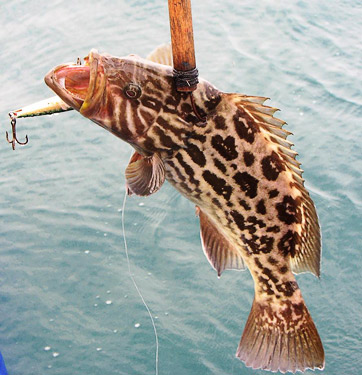
Mero can be very big, but for the whole period of our morning efforts we managed to catch only two pieces, about three kg each: 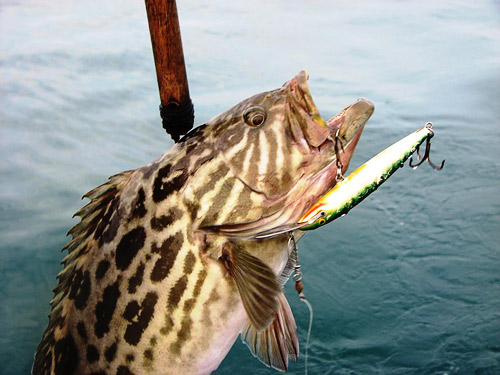
At the shore the wives of toilers of the sea dress some variety of ray that is locally called «guitarfish»: 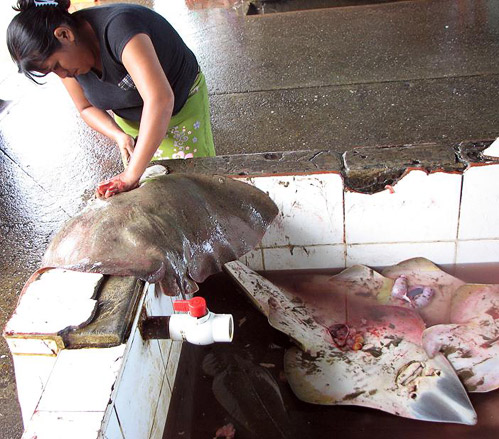
And vultures are patiently waiting for somebody's returns... or no-returns: 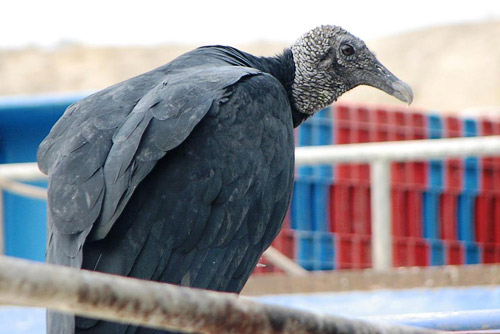
During the breakfast of some people with a very sceptic disposition Pedro and I came to the hotel having the air of true local fisherwomen and carelessly dropped our catch at their table. The goal was achieved and the program for the next day was already decided. Rest from our rest was temporarily terminated and the following day at 4 a.m. all our team of ayahuasca lovers and conquerors of Huayna Picchu started for catching the swordfish in the open ocean in 24 miles off the coast. It is natural that something like that could be arranged through our hotel-resort, the white yacht of which was moored opposite the beach, but my call to support local workers-fishermen was heard and the next day at 4 a.m. sharp, in pitch darkness, we sailed away aboard the old junker (to call it a boat would be an utter exaggeration) of don Pedro. Then our eyes started to get used to darkness and under the light of celestial bodies we were watching the world around us that once again turned out to be a new one. Flying fishes were passing near the board, sea turtle sailed past us and we could see even the whale. When, in a couple of hours the day started to break, the shore was practically indistinguishable, in return, above all this perturbation of colours, expectations and feelings, this sun was going up: 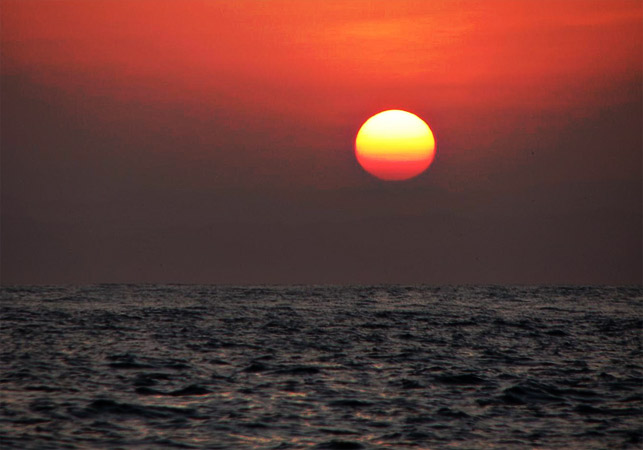
The youngest member of our team caught the very first fish that turned out to be a five-feet barracuda: 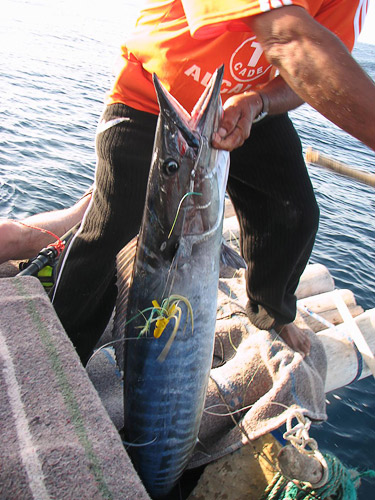
Our next catch was an outstandingly beautiful dorada: 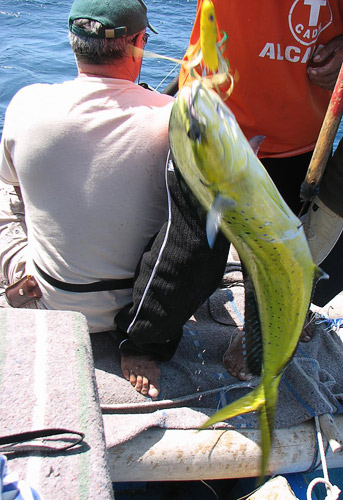
that started to do such things on the deck that Pedro, in order to save the human lives, had to execute it: 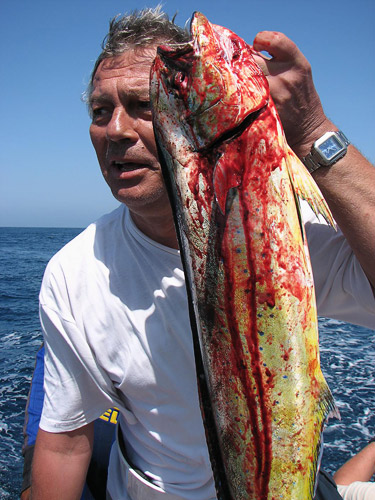
But, as we learned later, the most interesting part of fishing was just about to start. The engine, that was shut down for the time of bringing the fish to the boat, would not start again. We found ourselves between the shore, from which we sailed away for 12 miles and swordfish that were waiting for us in another 12 miles from there. The battery was dead. On a disabled watercraft we raised a patched black pirate sail, with the help of which and in case of favoring wind, in about a week we could be cast up on either Peruvian or Ecuadoran shore: 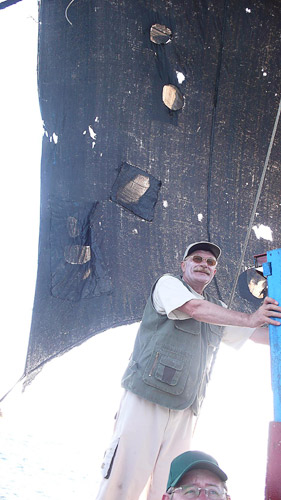
Meanwhile the wind was getting stronger, pointing to the first during the recent days storm. The people started to recollect a slightly impolite parting with the medicine man in the selva and for some reasons became sad. But luckily the mobiles were working and our glorious catcher of swordfish don Pedro managed to get through to the port and they promised to send a rescue boat with a new battery. Our salvation came approximately after 4 hours, when the storm was already quite strong. We exchanged the batteries with our rescuers, started the engine and the opinions of members of the expedition split. One part refused from any further romantics and begged for going back to the port. The other part wanted to throw outboard the first part and to continue the way to the full of swordfish promised waters, to which it was only half-way. Our argument was successfully stopped by a telephone call from the rescue boat. It turned out that their engine just stalled and now it was our turn to come to their rescue. It took approximately another hour of the so called fishing. The storm was getting stronger, the fish did not bite and it was time to turn back to the shore. And at this moment we saw and went through the most bright experience of the complete trip. In a couple of meters from the board there appeared a black falx of the swordfish dorsal fin. It slightly reminded us of an episode from the movie «The jaws», but was by far more beautiful and dynamic. The fin would go under the wave and appear almost on its crest; the swordfish, like a dolphin, played with our boat, emerging at one or another side. I looked at Pedro and could not recognise him. From a relaxed and slightly worn out by the sun and whims of tourists man, he turned into the best in Mancora swordfish catcher. His body became tense as a compressed spring, his features became sharp... he resembled a bird of prey that finally saw its victim. He gave instructions to the crew with his gestures and we were circling around the fish that was sailing around us, and throwing to her under its sword, to be more exact under the fin, this or that lure. It was difficult to say how long it lasted, maybe about twenty minutes until the swordfish disappeared. Some waves became five feet high, the sky was covered with clouds and we finally started for the shore. The same evening I came out to the shore on which hundreds of small crabs like this were running around: 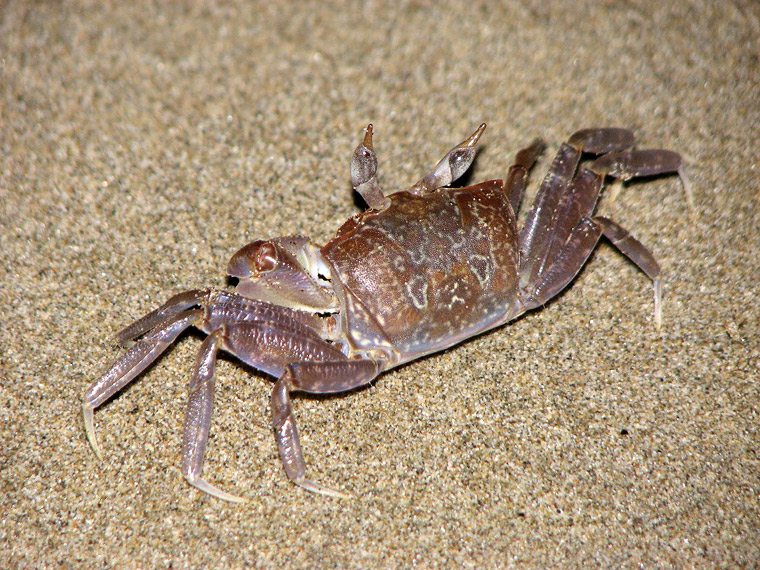
And early in the morning after the low tide the beach sands looked like that: 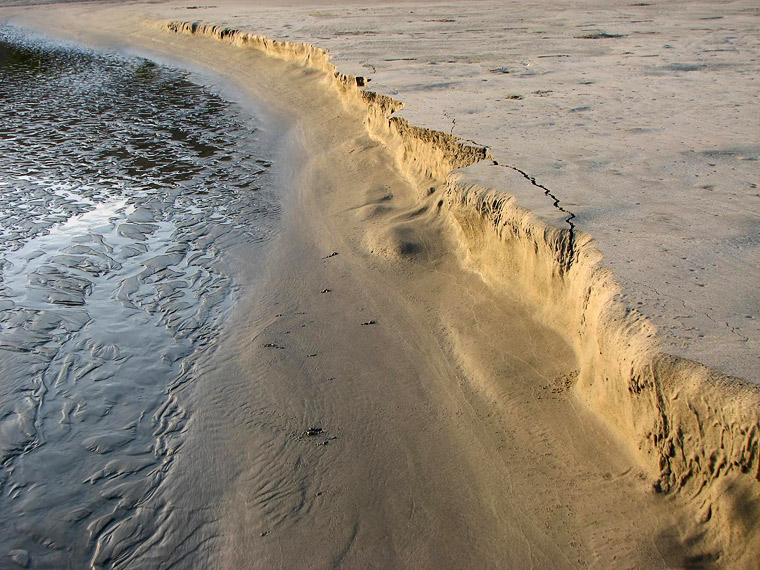
And like that: 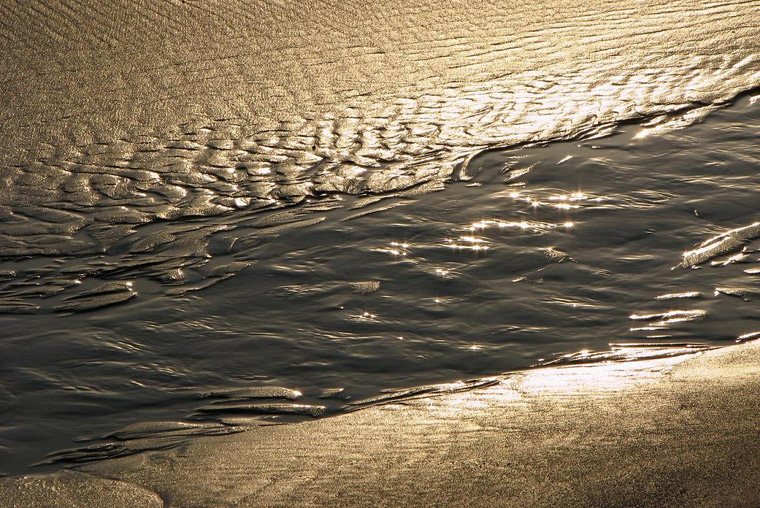
The rising tide left this small island just a few centimeters in size: 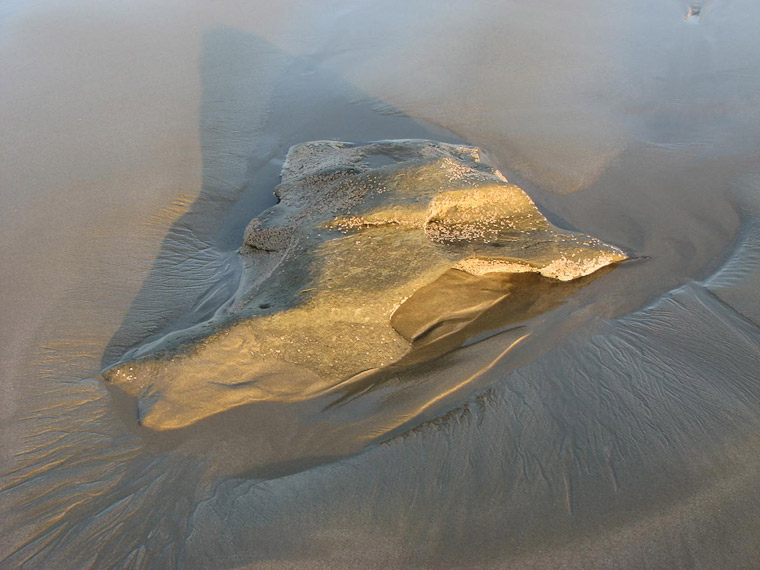
And left such a texture on the sand that resembles a Pacific wallpaper or screen for siren monitors: 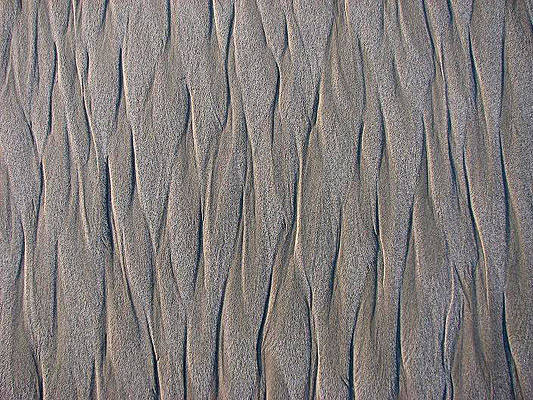
That is how another little crab tried to hide from me: 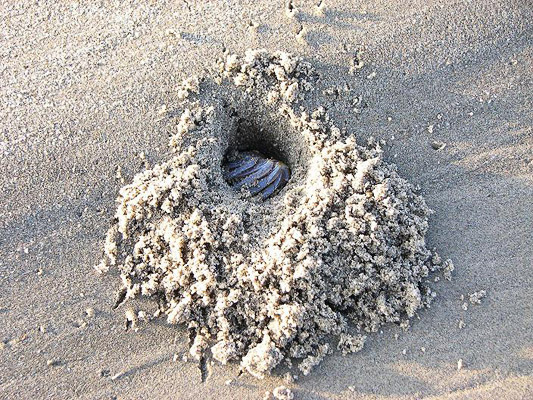
And it looked at me like that when it was dug out of its hole: 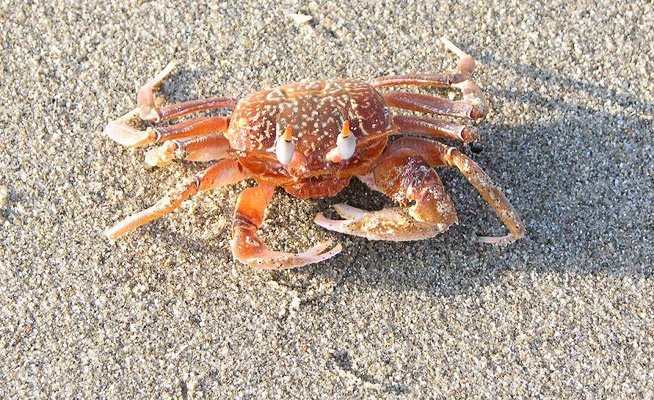
They are called ghost-crabs, but still, they are rather moon rovers than ghosts: 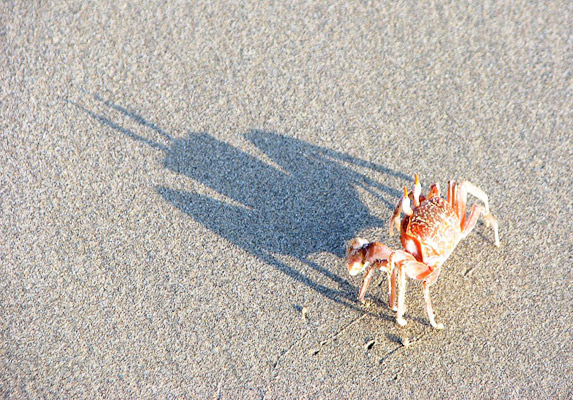
While developing the subject of arthropods in this report, here are other crabs that live and take rest in the very center of Lima on the rocks of the artificial dam on the way to pleasing to our stomachs sea-food restaurant Rosa Nautica: 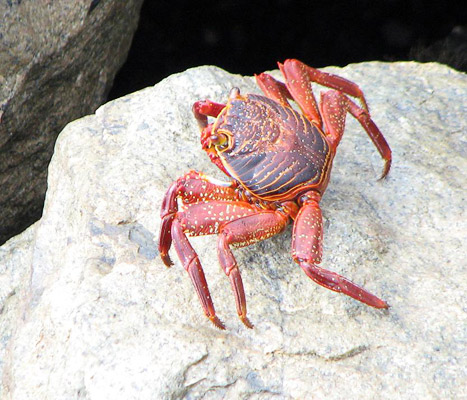
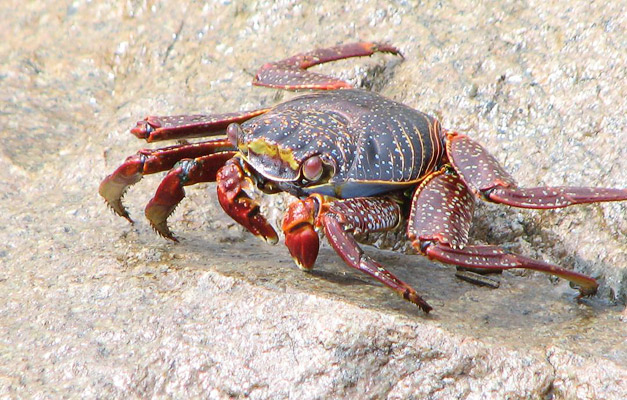
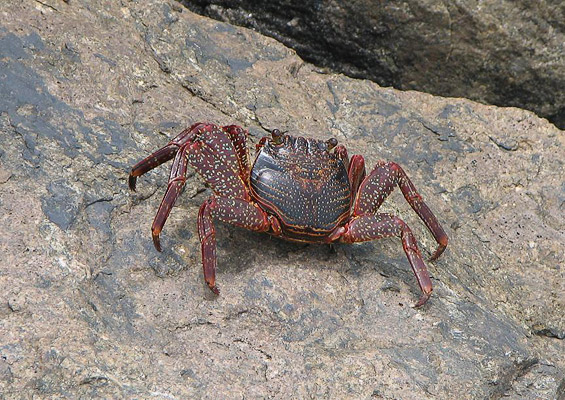
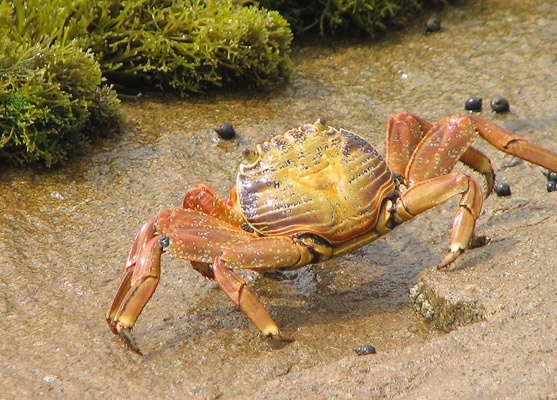
This sensibly crawling from us to the sea crab completes this summer, with December flavor, story. And continuation in shape of new rambles around new sites of Latin America will, naturally, follow. There is nowhere for us to go, is there?
|